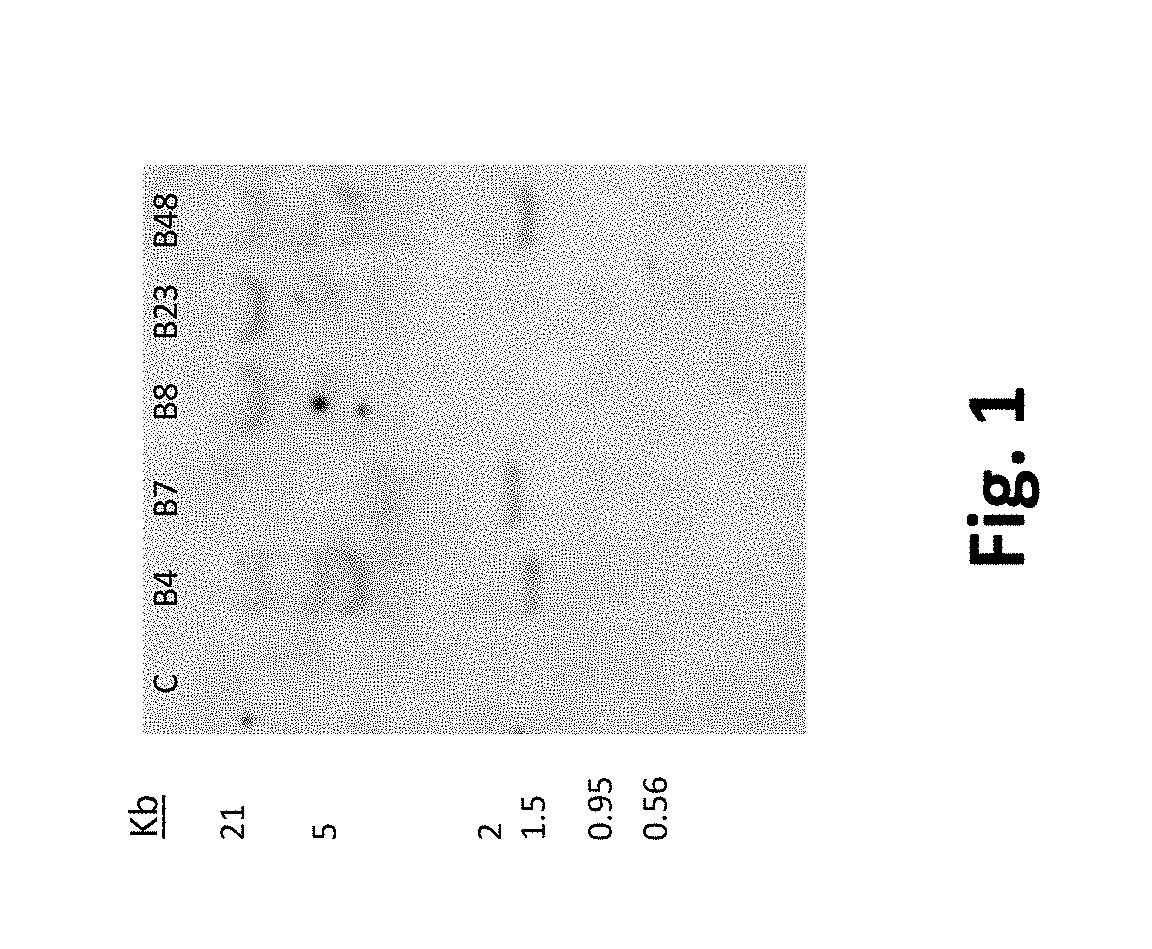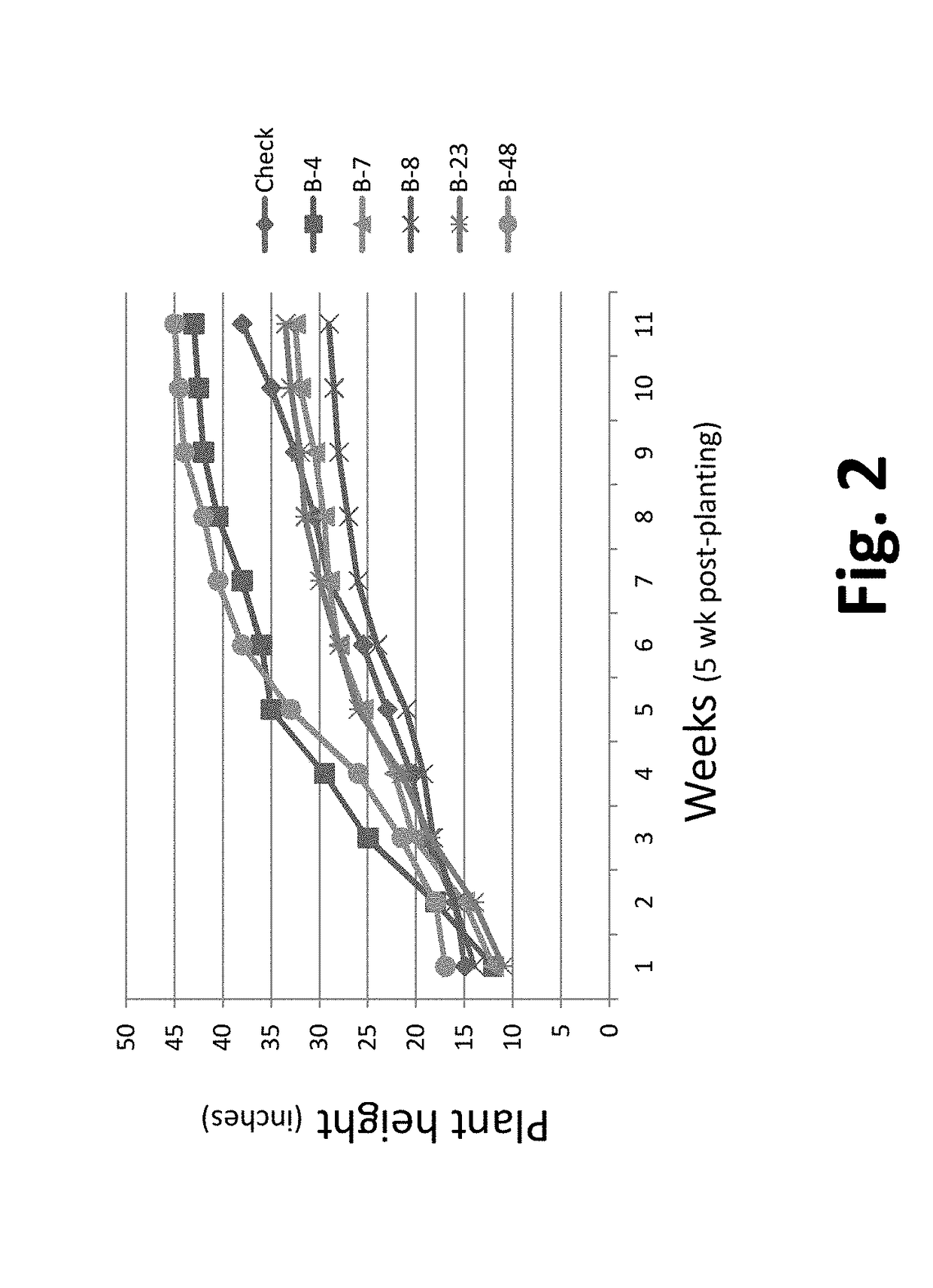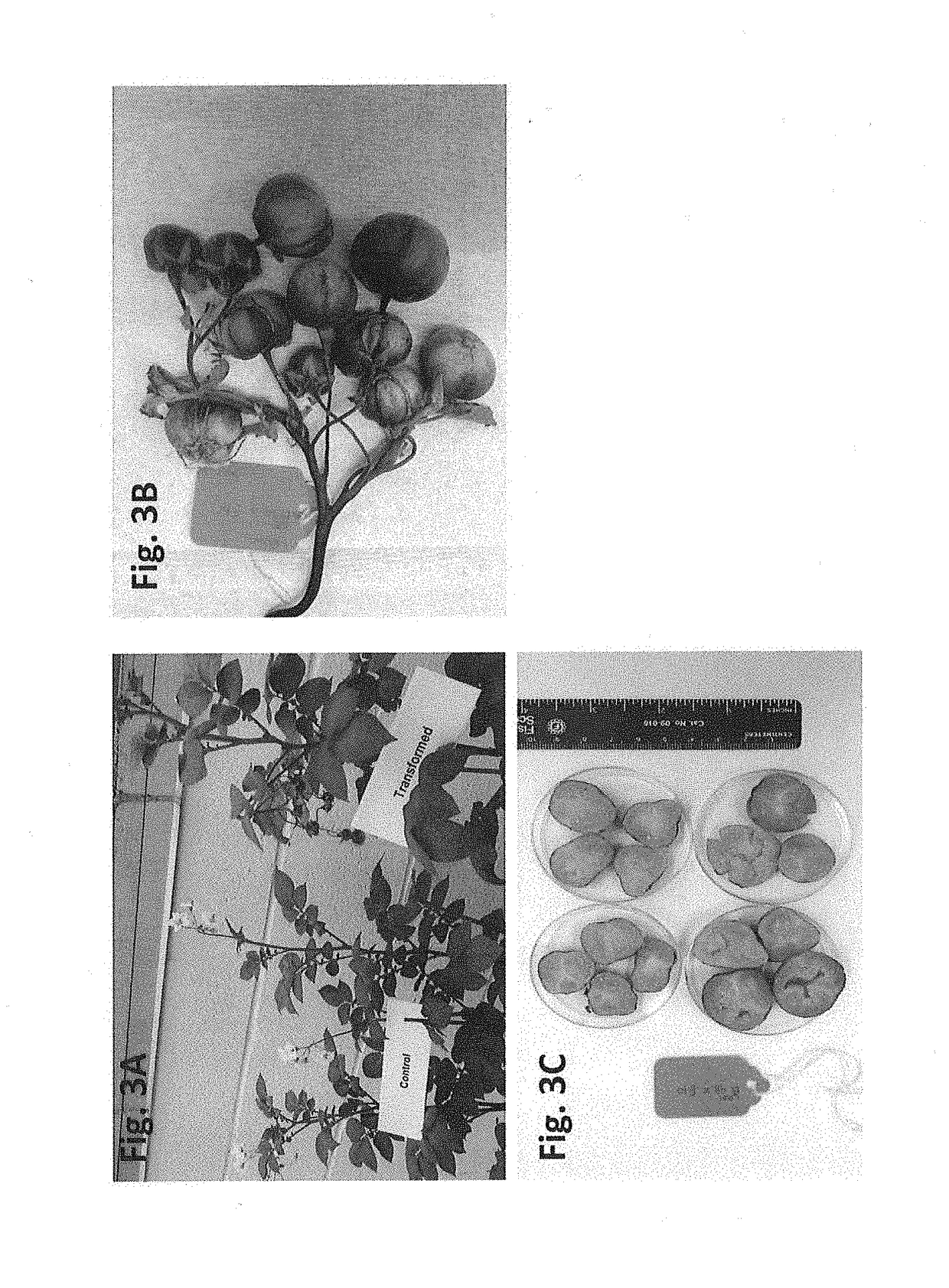Potato fertility restoration
a fertility restoration and potato technology, applied in the field of potato fertility restoration, can solve the problems of not being able to change conventional breeding practices, and achieve the effects of increasing carotenoid levels, and increasing nutritional value or yield
- Summary
- Abstract
- Description
- Claims
- Application Information
AI Technical Summary
Benefits of technology
Problems solved by technology
Method used
Image
Examples
example 1
Plant Transformation and Selection
[0049]Transgenic Bintje was developed using 4 week old tissue culture-grown plantlets. Leaves were excised, cut laterally and immersed for 15 min in an acetosyringonone-induced culture of Agrobacterium tumefaciens LBA4404 containing the CBD1 cDNA (SEQ ID NO: 1; GenBank Accession Number EU179903.1) in the binary vector pBI121. Subsequent procedures were essentially as reported previously (Banerjee et al. 2006. Plant Sci. 170:732-738). Regenerated plants were maintained in a growth chamber on Murashige Skoog (MS) medium.
[0050]DNA samples from putative transformants were screened by PCR using 35S specific primers (35S-F gataatcatcgcaagaccggc [SEQ ID NO:3] and 35S-R gacgtaagggatgacgcacaatccc [SEQ ID NO:4]) followed by sequencing of the PCR product. DNA from positive transformants were digested with Xba1, separated on a 0.7% agarose gel, transferred to nylon membrane and probed with Dig-labeled CBD 1 DNA according to manufactures protocols (Roche).
[0051]...
example 2
Breeding Studies: RB Late Blight Resistance
[0053]During an initial round of transgenic plant assessment it was noticed that the transgenic lines formed seed balls, unlike the control plants where the flowers abscised after blooming. The mature seed balls did not contain matured seed. Two sets of reciprocal crosses were made using Bintje as the female parent. Pollen from a transgenic Lenape containing the RB gene from Solanum bulbocastatum (Rommens et al. 2007. Trends Plant Sci. 12:397-403) was applied to the stigma of Bintje transgenics B-23 and B-48. Pollen from Bintje controls and the two transgenic lines were applied to stigmas of the transgenic Lenape. Seed balls were allowed to mature and seed harvested. A subset of seed from each of the successful cross pollinations was planted to determine inheritance.
[0054]Crosses proved successful when CBD1 transgenic Bintje was the female parent. Transgenic Bintje remained male sterile due to the same lack of pollen as found in the control...
example 3
Breeding Studies: Color, Shape, Nutritive Value
[0057]Pollen from the purple skin, yellow fleshed Peter Wilcox were applied to the stigma of Bintje transgenics B-23 and B-48. Pollen from Bintje controls and the two transgenic lines were applied to stigmas of Peter Wilcox. Seed balls were allowed to mature and seed harvested. A subset of seed from each of the successful cross pollinations was planted to determine inheritance.
[0058]Crosses proved successful when CBD1 transgenic Bintje was the female parent. Transgenic Bintje remained male sterile due to the same lack of pollen as found in the controls. Transgenic Bintje initiated flowering earlier, and each plant produced numerous seed balls, each with viable seeds, when out-crossed with donor pollen (FIG. 3). Crosses made to control flowers with the same donor pollen, resulted in floral abscission, the usual phenotype.
[0059]Flavor is multi-gene dependent. Multigenic traits were successfully transmitted after crossing the purple skin, ...
PUM
| Property | Measurement | Unit |
|---|---|---|
| height | aaaaa | aaaaa |
| resistance | aaaaa | aaaaa |
| color | aaaaa | aaaaa |
Abstract
Description
Claims
Application Information
 Login to View More
Login to View More - R&D
- Intellectual Property
- Life Sciences
- Materials
- Tech Scout
- Unparalleled Data Quality
- Higher Quality Content
- 60% Fewer Hallucinations
Browse by: Latest US Patents, China's latest patents, Technical Efficacy Thesaurus, Application Domain, Technology Topic, Popular Technical Reports.
© 2025 PatSnap. All rights reserved.Legal|Privacy policy|Modern Slavery Act Transparency Statement|Sitemap|About US| Contact US: help@patsnap.com



